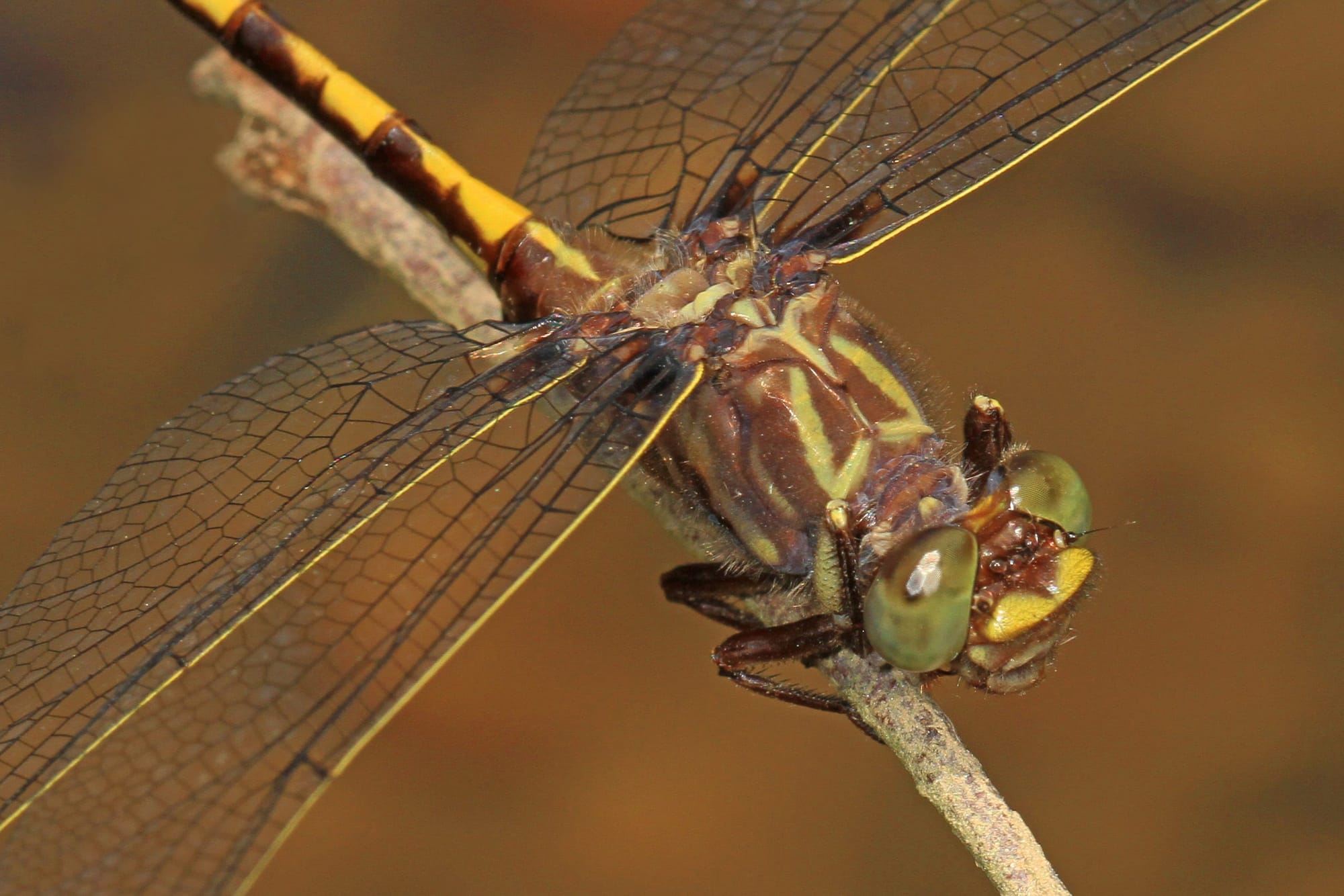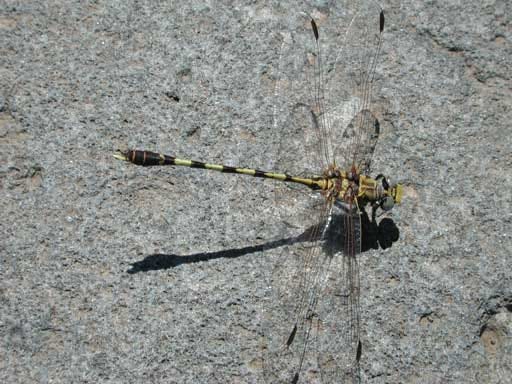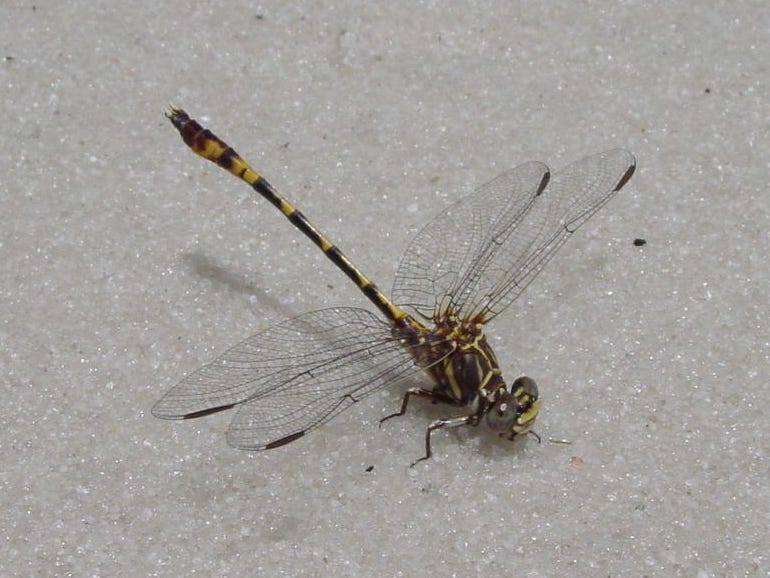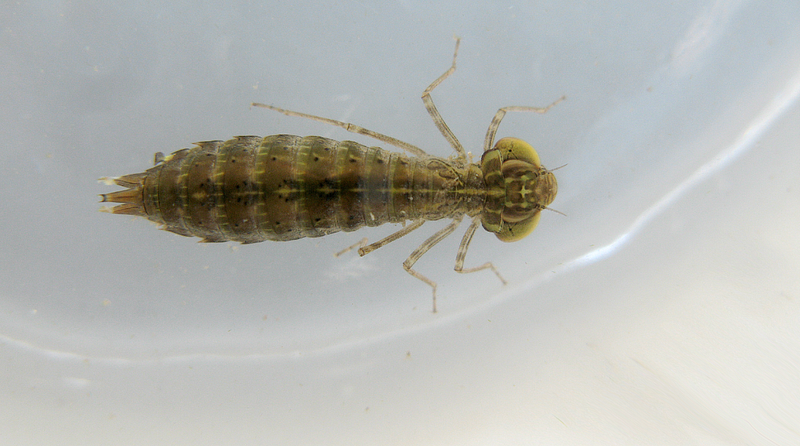
I hope you all liked some of the historical references added to last week’s story. Quite a few were new to me when I was doing my research for the post and I found them so interesting that I wanted to share them, even if they weren’t my usual science and nature fare. That feeling is the reason why I started Nature Stories, because I love learning new things and making new connections, but I also love sharing those with other people.
This week, we’ll be looking at a genus of dragonflies known as Progomphus, specifically three species in that genus that are all currently listed as Endangered. They are commonly called sanddragons because their typical habitats are sandy freshwater beaches and pools. In total, there are 69 different species belonging to Progomphus, all found in the Americas and primarily tropical.

Many of those species are listed as either Least Concern or Data Deficient and I had to use pictures of these more common species for this story because I was unable to find any pictures of the Endangered ones. The top photo is of the common sanddragon, Progomphus obscurus, the picture directly above is the gray sanddragon, Progomphus borealis, and below is the tawny sanddragon, Progomphus alachuensis. The common sanddragon is one of the species that is found in more temperate climes, the eastern United States and southern Ontario Canada, and is seen more often.
All three of the Endangered Progomphus species are listed for the same reason: shrinking natural range. The bristle-tipped sanddragon, Progomphus tennesseni, and the elusive sanddragon, Progomphus zephyrus, are native to a small area in the Dominican Republic. Ris’s sanddragon, Progomphus risi, is found in Chiapas Mexico and Guatemala. Current population sizes and trends for the three are unknown. Instead, the assessment took into account the second criterion I mentioned in the introductory story for Season 3. This factors either the extent of occurrence or area of occupancy.
The area of occupancy is the actual total area where the species lives. The extent of occurrence is the total area of an imaginary polygon that contains all areas of occupancy for that species. For example, if a species is found in only 3 locations of 500 sq. km each, then the area of occupancy would be 1,500 sq. km and the extent of occurrence would be the area of the rough triangle that contains all three populations. For the Progomphus species we are talking about today, the assessment uses extent of occurrence.
In order to qualify as Endangered, a species must have an extent of occurrence of less than 5,000 sq. km. Progomphus zephyrus is known from four locations with an extent of occurrence less than 3,000 sq. km while both Progomphus tennesseni and Progomphus risi have an even smaller extent of less than 1,000 sq. km with only two known locations for the latter and only one specimen for the former.

The reason for such small ranges is primarily habitat destruction or degradation. Progomphus risi lives in lowland forest streams, but much of the area has been deforested, which impacts the suitability of its habitat. The two Dominican species are also found in streams. Much of the water there has been diverted for human use. Water is vital for dragonflies of all types because of their reproduction. Immature individuals hatch from eggs in an aquatic form known as a nymph. This form actually lasts the vast majority of the lifespan of the dragonfly, sometimes for years while the adult only lives for a few months.

Without water, dragonfly eggs cannot hatch and dragonfly nymphs cannot develop. While actions such as deforestation and water diversion can impact all dragonfly species, it is even more harmful to those that are already at higher risk. Isolation to a small area is an important risk factor in species survival, almost as important as raw population size. The smaller the area that a species occupies, the more vulnerable it becomes to chance events, both natural and man-made. A single disaster can wipe out a species and any loss of habitat can be devastating. An area of 1,000 sq. km is smaller than the total area of the city of Los Angeles, and that is only the extent of occurrence, a theoretical maximum current range.
This is why the IUCN created multiple possible qualifying criteria for their categories. Different species can be measured more easily in some ways than others, so it is important to find different ways to detect those that are at risk. It can be difficult to get accurate counts of population size for an insect that is only a few centimeters long, but calculating their overall range can be done with fewer captures and observations.
Next week, we’ll look at another Endangered species, as well as some of the other classification criteria.